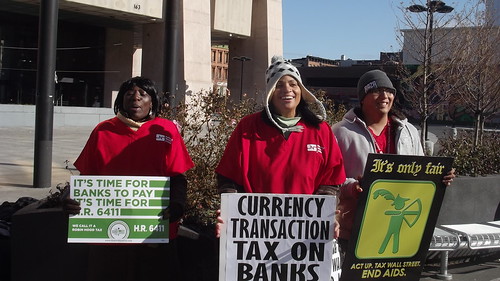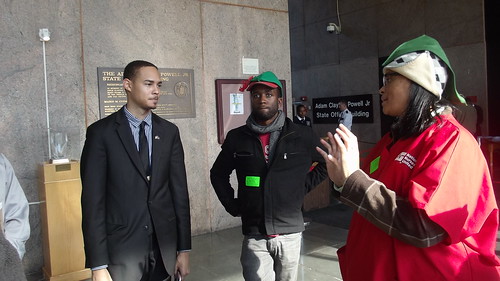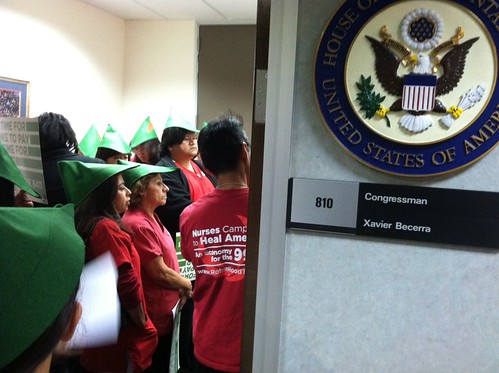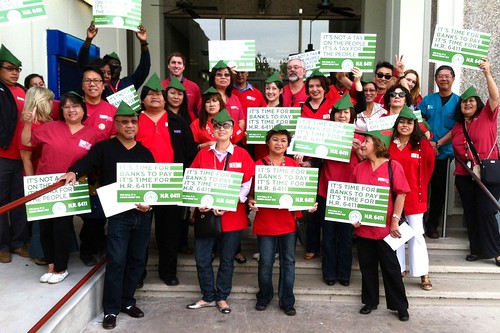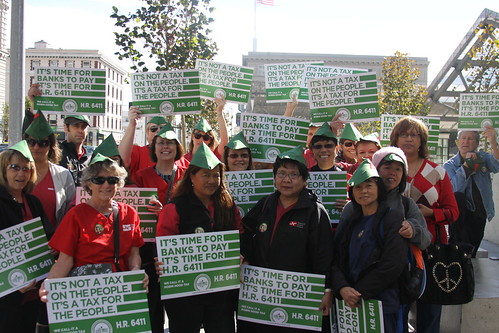The worldwide campaign to enact Robin Hood taxes on financial speculation received a real boost in a major meeting of global union activists this week — with the help of U.S. nurses whose Robin Hood hats and messaging is becoming a familiar site at home.
Delegates representing 329 unions from 123 countries rallied today in the streets of Durban, South Africa for the Robin Hood Tax while also speaking out against austerity measures pushed by the same finance sectors that are the target of the tax.
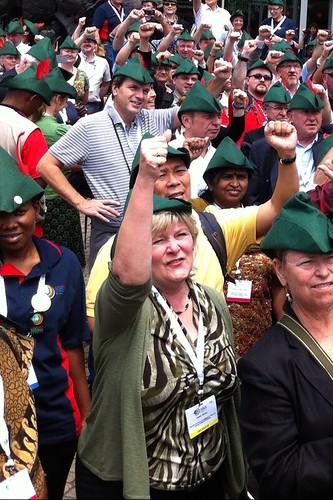
NNU Co-Presidents Jean Ross, RN, and Deborah Burger, RN at a massive rally today in Durban, South Africa

The union leaders, representing 20 million workers, were in Durban attending the 29th World Congress of the Public Services International (PSI).
On Wednesday, PSI delegates heartily endorsed an NNU-sponsored resolution backing the Robin Hood tax — which sets a small fee on the trading of stocks, bonds, derivatives, currencies, and other financial instruments. Some 30 nations around the world already have a version of the tax, also known as a Financial Transaction Tax.
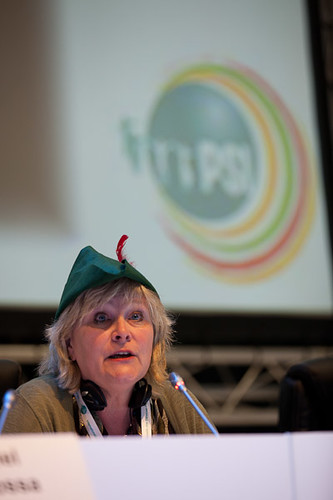
NNU Co-President Jean Ross, RN at the PSI Convention in South Africa
“The Robin Hood Tax Campaign is vital because we need a movement dedicated to standing up for our communities– for jobs, for health care, for decent housing, education, a secure retirement and quality public services that all of us so desperately need,” Jean Ross, RN, co-president of National Nurses United, told the congress.
The resolution, entitled, “The Global Fight-Back Against Austerity,” said, “The Robin Hood Tax has the opportunity to turn the tide in a century whose first decade has witnessed an appalling assault on equality and community. The time for the financial sector to pay a fair sales tax on its trading is long past due.”
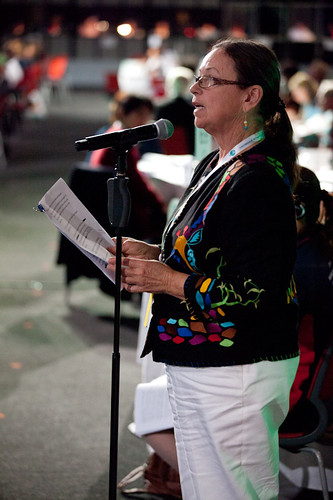
NNU Co-President Deborah Burger, RN, addressing the congress
Speaking of the social and economic devastation caused by the world economic crisis worldwide, Deborah Burger, RN, NNU co-president, told the delegates:
“Working people did not cause this crisis, the bankers and the traders of the world’s financial markets did. Most of them have recouped their losses but the rest of us have paid the bill.
“It’s well known that it’s the poor and working class which are suffering – and deprivation has only intensified. This is a disgrace that requires not only our condemnation but our determined, united and collective action. The Robin Hood Tax Campaign is an essential part of that fight-back.”
The Robin Hood tax is, of course, making rapid advances around the world. France earlier this year implemented the tax and even banking industry-inspired critics of it admit it has proceded without the predicted fears.
Momentum continues to grow throughout Europe as well, as this report notes:
“Now Germany, Spain, Italy, Austria, Belgium, Portugal, Greece, Slovenia, Slovakia and Estonia have followed suit. Robin Hood Tax campaigners consider this a significant achievement after just three years of campaigning.”
The PSI Congress also passed an NNU-proposed resolution supporting minimum, mandatory, nurse-to-patient ratios.
Highlighting the successes of nurses in California and New South Wales and Victoria in Australia in getting laws passed imposing such ratios, Zenei Cortez, RN, co-president of the California Nurses Association and NNU Vice President, told the delegates:
“Winning such nurse-to-patient ratios requires collective patient advocacy and this resolution puts PSI firmly in support of this demand on a global basis. Through such collective efforts, we will saver the lives of thousands of patients who deserve to have quality and dedicated nursing care when they are in the hospital.”
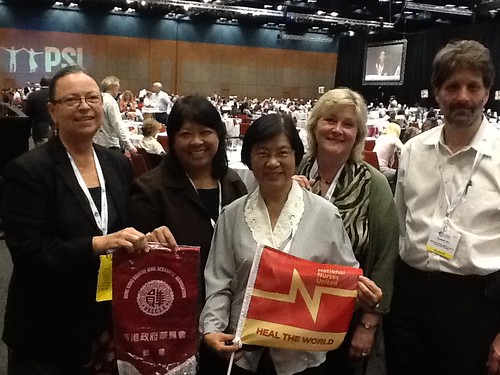
NNU leaders with leaders of the Hong Kong Chinese Civil Servants Association.
The delegates to the Congress also elected Rosa Pavanelli as PSI’s new general secretary, the first woman ever elected to head the global union federation. Pavanelli, who was backed by NNU, is leader of the Italian public workers union, FP-CGIL, which is the largest union of nurses in Italy.

Rosa Pavanelli at the NNU event in Chicago in May
Pavanelli, who joined with NNU nurses and other activists at the historic march and rally for the Robin Hood Tax in Chicago last May, and has been a leader pushing for a Robin Hood Tax in Europe, pledged to make the Robin Hood Tax Campaign a priority of PSI.
Follow and recommend this blog on Daily Kos here >>
Share this blog post with friends using the links below

